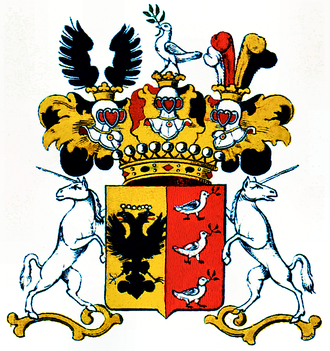Discover Your Roots
SIGN UPDiscover Your Roots
SIGN UPPace is a gender-neutral name of English origin, meaning "Peaceful One." It is derived from the English word for peaceful and serene. The name Pace carries a sense of tranquility and calmness, reflecting the characteristics of a peaceful individual. In addition to its meaning, Pace is also associated with various entities, including businesses, educational institutions, and places around the world. It is also linked to sports, units of measure, and other uses, such as a specific horse gait and a Latin editor's mark. The name Pace embodies a sense of harmony and tranquility, making it a meaningful choice for individuals seeking a name with a peaceful connotation.

The Pace Egg plays, an Easter custom in rural Northern England, are rooted in the tradition of medieval mystery plays. This practice, once widespread in Northern England, faded in the 19th century but experienced a revival in some areas of Lancashire and West Yorkshire in the 20th century. The plays featured mock combat and were performed by Pace Eggers, who often received decorated eggs from villagers. Additionally, several closely related folk songs were associated with Pace Egging. The term "Pace Egg" has various historical forms, such as "paste egg" and "paschal egg," with origins stemming from Anglo-Norman and Latin roots. The drama of Pace Egging typically involves mock combat, the death and resurrection of a hero, and the presence of characters like St. George and a fool named Toss Pot or a Turkish knight. The Pace Eggers, locals who performed in surrounding villages, donned costumes and often blackened their faces. Traditionally, eggs were decorated with onion skins, boiled, and eaten for Easter breakfast or used in games and as decorations. Pace Egging has a long history in Northern England, with its origins dating back hundreds of years and its decline beginning in the 19th century. However, various revivals have taken place in different locations, such as Middleton, Bury, and Heptonstall, where the tradition has become an established Good Friday custom.

The Pace Jubilee Singers, founded by Charles Henry Pace in 1925, were pioneers in gospel music and one of the first gospel groups to be recorded. Based in Chicago, they recorded over 40 songs for Victor and Brunswick Records from 1926 to 1929, including spirituals arranged by Pace, songs and hymns by Pace and Charles Albert Tindley, and others. The group performed in a close harmony style, often accompanied by piano or organ. Notably, Thomas A. Dorsey was briefly associated with them, and in their later recordings, Hattie Parker was identified as the soloist. Their repertoire included timeless classics such as "My Lord What a Morning," "Ezekiel Saw the Wheel," and "What a Friend We Have In Jesus." The Pace Jubilee Singers left an indelible mark on the gospel music landscape, and their recordings continue to inspire and uplift audiences to this day.This summary introduces the Pace Jubilee Singers, highlighting their historical significance in gospel music, their extensive recording history, and their enduring impact on the genre.

The Pace von Friedensberg is an illustrious Austrian noble family of Spanish and Italian descent, holding the title of Imperial Count within the Holy Roman Empire. The family's lineage dates back to 1336 when they were ennobled in Spain and later settled in Trieste, Italy before establishing themselves in the Venetian Republic in the fifteenth century. The original Spanish surname, Castronovo, evolved into the Italian title Conte de Pace, which was adopted as the family name. Notable members of the family have served in the Imperial and Royal Austrian military, with significant contributions from individuals such as Carl Maria de Pace, Freiherr von Friedensberg, and William Paul Eugen Graf Pace von Friedensberg. The family's hereditary lands in Austria were granted in the seventeenth century, solidifying their esteemed position within the empire. Today, the lineage continues through descendants like Count Rudolph Pace and Countess Luise von Beroldingen, maintaining the legacy of this distinguished family.


All images displayed on this page are sourced from Wikipedia or Wikimedia Commons.We use these images under their respective Creative Commons or public domain licenses. Wherever applicable, author attributions and license information are provided. If you believe an image is used incorrectly or outside its license terms, please contact us so that we can review and correct the issue.